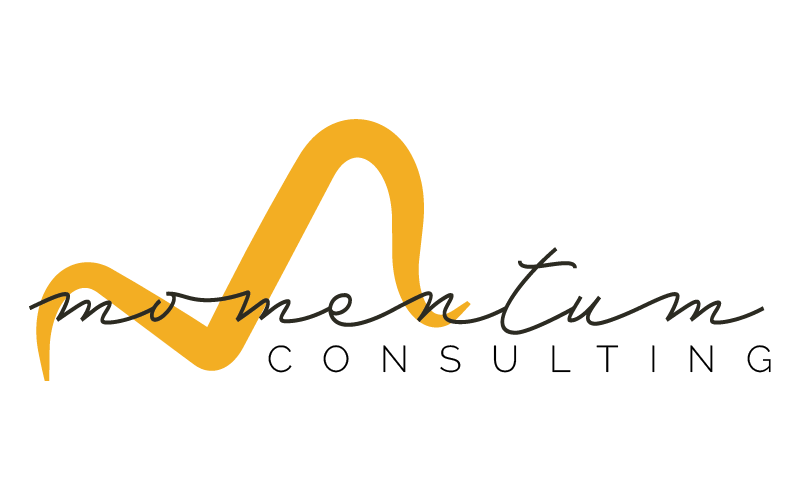Written By Danielle Fauteaux
Although the intrinsic truths of life are evident all around us, including in our agencies, it can be easy to miss the signs we should be seeing as leaders, especially with the busyness and daily demands that come with operating a company.
However, when we miss the small yet important nuances of what is happening at our agencies, both above and below the surface, we may fail to adequately nurture our agencies and our team members and subsequently fail to produce the best possible outcomes for our people and our businesses.
It takes high levels of intentionality and proactivity, paired with responsiveness and flexibility, to establish a resilient and productive agency, similar to the efforts it takes to yield a bountiful harvest from a garden. We must be vigilant, thoughtful, and willing to adjust our strategies and tools depending on the season and both internal and external pressures that threaten the well-being of our vegetables, trees, and other plants.
After all, a garden needs both sunshine and rain, both planting and tilling, both watering and weed-pulling, and lots of observation and response to threats, in order to survive and thrive. If you don’t maintain the right conditions, then the plants will die—and you’ll be left without anything of substance to take to market.
Such being the case, let’s explore 7 guiding principles to make your agency more fruitful, which you can unpack in greater depth by downloading the full pocketbook, The Gardener’s Guide to Growing a Resilient Agency.
1. Be Proactive to Culture a Balanced Soil
The key element of a healthy garden is the soil. That is your company culture, and in both cases, it’s your growing medium. Soil is a dynamic, living ecosystem of microorganisms and any output from the roots of what’s growing in the soil. It’s not dirt and it has to be cared for as the living system that it is. Much the same, your company culture will not exist unless you bring it to live and keep a watchful eye that the right micro-organisms are thriving within it.
Ask yourself,
- What are the life-giving aspects of your company culture?
- Where do you see nutrient deficiencies or an opportunity for enhancement?
- Where do you need to reinvigorate your people with a new concept, a new challenge, a new experiment?
- How can you bring balance back to your company culture if it’s out of balance?
2. Acknowledge the Taproots & Avoid Root Rot
In the organizational world, your taproots are the core values and guiding principles of your team members. Although these can feel a bit intangible at times, with a majority of the growth happening under the surface, they provide the main structure for the plant. Those core values are the fundamental lens through which your team member makes decisions and interacts with others in their sphere. They are the main stem of the system from which other roots will grow, providing that team member with a firm foundation for growth and development.
- Guiding Principles = Tap Roots
- Imbalanced Training = Root Rot
But when we find a desirable balance—providing the proper levels of water and nutrients—we achieve the results we desire for our agencies. The roots are compelled to spread down deeper to find new sources of water (skill development) and to branch out to secure the necessary nutrients (application of knowledge) to grow. With patience and intentionality, your agency can yield strong and bountiful produce from healthy, well-adjusted plants.

Although the intrinsic truths of life are evident all around us, including in our agencies, it can be easy to miss the signs we should be seeing as leaders, especially with the busyness and daily demands that come with operating a company.
This pocketbook, The Gardener's Guide to Growing a Resilient Agency, takes an allegorical approach to the exciting challenge of establishing a resilient and thriving agency and what it takes to be an efficient and nurturing leader in this tenuous and temperamental operating environment.
This quick read will equip you with 7 principles to rethink how you approach the day-to-day of your agency and become more fruitful. Simply submit the form below to download the guide.
"*" indicates required fields
3. Be Proactive to Grow Leaders & Avoid Root Binding
The next facet of growing a resilient agency has to do with team member empowerment and giving each person room to grow so that they can complete their tasks and produce individually without constant oversight. This has a lot to do with the type of environment you create.
In a garden, root binding is a potential problem that’s also related to the plant’s environment. It occurs when a plant is attempting to grow toward maturity, but the container in which it is planted is not large enough to accommodate this growth.
As a result, the plant becomes what is known as “root bound.” The roots of the plant encircle the inner edge of the container, or sometimes start to slip through drainage holes or up over the lip of the container. Once the roots are bound to the pot in that way, they quickly strip the soil of nutrients and water. Ultimately, the plant becomes suffocated and it can no longer grow. This also makes the plant more susceptible to mold and root rot.
The same thing can happen at your agency if your team members are not given adequate space to grow, and it’s up to you as the organization’s leader to facilitate that kind of favorable environment.
4. React to Leaf Overgrowth by Pruning
Leaves and shade are necessary components of a healthy plant. However, too much leaf growth means energy is going into managing the leaves, rather than producing fruit.
Just like some plants are more prone to investing their energy into developing additional branches and leaves, rather than into fruit, some team members also are prone to investing their resources into new systems, more documentation, and “better” tools—simply because it provides them with more shade, or comfort zones—rather than producing fruit by culturing client upsells and cross-sell opportunities.
The key is discernment as you work to identify what documentation, what tools, and what procedures genuinely boost efficiency and enable your agency to run more smoothly and which ones simply sound nice or feel easy and comfortable while just creating busy work and depleting energy resources that could be better spent elsewhere.
5. React Quickly to Pests and Disease
Even a garden that is planted and tended to carefully is susceptible to pests and disease problems, such as harmful insects, weeds, blight, fungus, and mildew. Your goal is to address these issues swiftly and decisively so that pests and disease are unable to proliferate and cause further damage to team morale or your garden’s productivity.
For agencies, these noxious elements can look like negative or draining clients and partnerships, toxic team members, and even overbearing policies and protocols. All of these can plague an agency and suck the life out of your team members, making it impossible for them to perform at their best.
As you’re juggling a wide variety of tasks to lead your agency, make sure you’ve also established regular check-in points to identify if any blight, mildews, or pests are present—particularly under the surface. There may be issues festering that you won’t be aware of unless you make the effort and take the time away from the “urgent” items in your inbox to notice these important threats.
6. Be Proactive with Planting Schedules, Crop Density, and Crop Rotation
Unless your agency is producing a net profit, your agency is a hobby, thus we need to talk about how a healthy garden will have a sustainable, and profitable, output. Consider, are your plants producing fruit consistently and efficiently so that you can maintain a certain level of output on a regular basis? Is the type of produce you’re trying to sell in demand in your market?
To help optimize your garden’s production and ensure long-term sustainability, you would employ proactive strategies around crop selection, planting schedules, crop density, and crop rotation. The same applies to your agency.
Unpack a few key financial metrics and operational KPIs to monitor and manage by downloading the full pocketbook.
7. Be Intentional in What You Take to Market
Finally, you can make the most of your garden by being intentional in what you’re producing to take to market. As with all things, just because you can grow something in your garden doesn’t mean you should. Some output is going to be more worthwhile than others, and the type of output the becomes most valuable will ebb and flow with changing market conditions.
In order to grow fruit, and a desirable variety, pay attention to feedback from clients; the performance of your products and services; changing levels of demand within your niche market; and other indicators. Then be responsive. Figure out how you can develop or grow the crops that will be most profitable for your specific agency by being the most desirable and valuable to others. Be flexible and innovative to create new variations that help your harvest flourish.
Growing a Resilient Agency that is Made to Last
Gardens take hard work, thoughtfulness and dedication. So do resilient agencies.
You can’t cultivate a garden that is sustainable and productive year after year without a couple of key practices, from choosing the right plants, watering them, and balancing their exposure to sunlight to dealing swiftly and carefully with pests and diseases.
Your agency and your team members need the same kind of care and management to remain healthy, resilient and productive for the long haul. It starts by having a clear grasp on what type of plants you need to grow to produce your desired harvest and what is a reasonable expectation of productivity.
Each plant, or team member, that you add to the mix will present a new variable that may require you to adjust your company culture and work environment to foster the maximum output. You may also have to proactively apply tailored strategies and practices to nourish your plants or encourage their growth.
Sometimes you might encounter various garden-variety pests and problems, from root rot and root binding to grubs and aphids. But once again, decisively applying a remedy and then practicing observational maintenance is key. After all, it takes time to grow a successful, resilient agency, to cultivate favorable conditions, and to improve your harvest. These things don’t happen overnight, or even in a week, or a month, even if the entire harvest can be wiped out in such a short time as this.
🌱 Each day, venture out to your garden with a purpose.
🌱 Practice intentionality.
🌱 Wander around and see how your various plants are performing.
🌱 Check the nutrient levels of your soil.
Sometimes you’ll be viewing things from above, seeing how all the individual elements are working together as a whole, and sometimes you’ll be in the weeds.
But day-in and day-out guardianship of your garden, or your agency, will make sure that you’re not missing any important truths and that you’re maintaining the right conditions for your team members to thrive and regularly produce a crop that you are proud to take to market and that creates long-term, loyal customers. In this way, your agency can become an industry staple that’s not going anywhere.
Building a successful marketing agency takes grit, a focus on your value, and sometimes a *loving* kick in the pants.
Needing an ally as you achieve your long-term goals?
I’d be happy to help.

